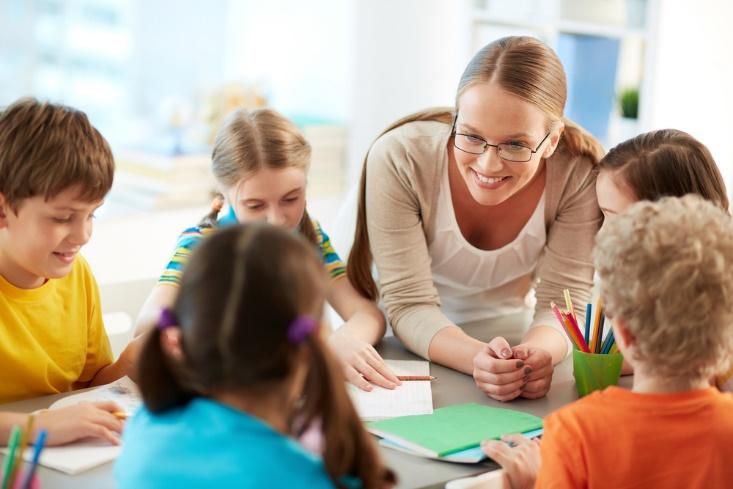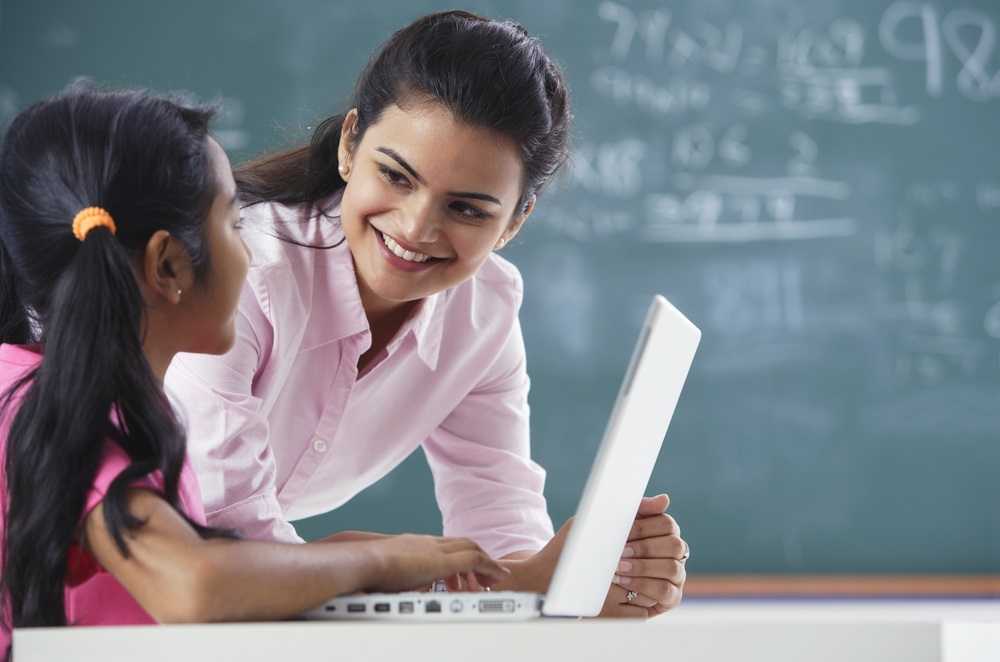A positive learning environment is crucial for students to thrive. It encompasses the physical, social, and emotional aspects. Below are 9 strategies K-12 teachers can use to establish a safe and stimulating learning environment for students.
1. Create a Physical Environment Conducive to Learning
It can be difficult for students to focus and engage if the physical classroom environment is not conducive to learning. Therefore, ensure the class is set up to provide all students with a safe and comfortable environment. Consider the air quality, temperature, lighting, wall color, desk arrangement, organization of learning accessories, etc.
Ideally, you want the class to have good natural lighting and free airflow. However, if that is not possible, ensure adequate electrical lighting and air conditioning. Overall, the space should be clutter-free to promote attentiveness.
2. Establish Ground Rules
Set clear expectations for what you expect from your students. It gives them a clear sense of direction and prevents confusion about what to do, how to do it, and when to do it.
Establish ground rules for entering and leaving the classroom, how to behave inside the classroom, academic performance, social interactions, and general positive behavior.
If your students are older, you may allow them to participate in making the classroom expectations. For example, have them discuss the rules for group work and class projects. Where appropriate, assign roles and responsibilities to different members of the class. Review class rules and routines regularly to ensure they are effective and serve you and the students as intended.
3. Get to Know Your Students
Be intentional about knowing your students’ interests, learning styles, personalities, mindsets, goals, co-curriculum activities, etc. It helps you better structure your teaching methods to enable them to thrive. It also affirms them and makes them feel seen and understood.
There are different strategies you can employ to get to know your students better. The most important is conversing with them individually and in group settings such as class meetings and team building activities.
You may also assign them journaling exercises with prompts that help them to understand themselves. Alternatively, have students complete personality and learning style tests you review later.
4. Let the Students Get to Know You
Most students have preconceived notions about their teachers. Although you still want to maintain some level of privacy, students’ preconceived notions about you can hinder your ability to connect with them.
Help your students get to know you. For instance, when introducing yourself to a new class, you can provide them with a highlight of where you come from, what your values are, why you like your job, etc. You could also lead them through a “get to know your teacher” activity.
If you have been their teacher for a while, play a “how well do you know your teacher” game. You may also let them know you by sharing some of your life experiences when providing examples for relevant topics.
5. Be Positive
Your attitude, demeanor, and behavior influence student behavior. Therefore, you want to be a good role model to them in order to create a positive classroom environment. You can do this by being warm, welcoming, respectful, patient and kind. Also, treat all learners equally and with fairness.
Show up in time for your lessons. Embody an attitude of confidence and belief in your students. Encourage and nudge them through challenges with positive interactions to attempt a question, task, or project even if it seems difficult or they are unsure if their answer or approach is correct.
6. Personalize Your Teaching Methods
Personalize your teaching methods to suit students’ needs, interests, and learning styles. For example, younger students have a shorter concentration span and learn better through hands-on experiences. In this case, plan your lessons to include games, art projects, and break times for student achievement.

On the other hand, most teens are interested in technology. Incorporate multimedia learning tools like videos, education apps, animations, and virtual reality to pique their interest and improve understanding and engagement. Be flexible with your teaching methods and offer students numerous chances to learn in different ways.
7. Foster Community Among the Students
Developing a sense of community gives students a sense of belonging and a platform to support and celebrate each other. This motivates them and enhances their learning experience.
You can foster community through team building, celebrating together, or coming together to support each other if one is facing challenges. Also, incorporate lots of opportunities and instructional strategies for students to interact during class sessions and throughout the learning process. Instill social skills such as eye contact, avoiding interruption, conflict resolution, and problem solving among themselves.
8. Foster Resilience and a Growth Mindset
Let the students know mistakes and failures are part of any learning process. Refrain from a reward and punishment system whereby students get rewarded when they get things right and are punished if they make mistakes.
It discourages the students from even trying and builds a culture of unhealthy competition, which then discourages collaboration. If a student gets something wrong, say, “you can’t do it yet, but you will with some help or practice.” Whenever possible, allow them to revise and try again.
9. Be Open to Receiving Feedback
Like any other relationship, you must be receptive to constructive feedback from your students. Create an open line of communication for students to communicate any questions or concerns they may have. You may also actively ask them for feedback either in person or through surveys.
Provide general guidelines for them to give you feedback in a respectful manner. The feedback can help you plan your teaching content and provide insight into enhancing the student learning experience.
10. Conclusion
A positive classroom climate enhances the student learning experience. A positive environment is safe, warm, and welcoming. It provides the students with a sense of belonging by fostering community and affirms and validates them as individuals.
There are different strategies for creating a positive learning environment in your class, ranging from ensuring that the physical conditions are favorable to being receptive to students’ feedback.




